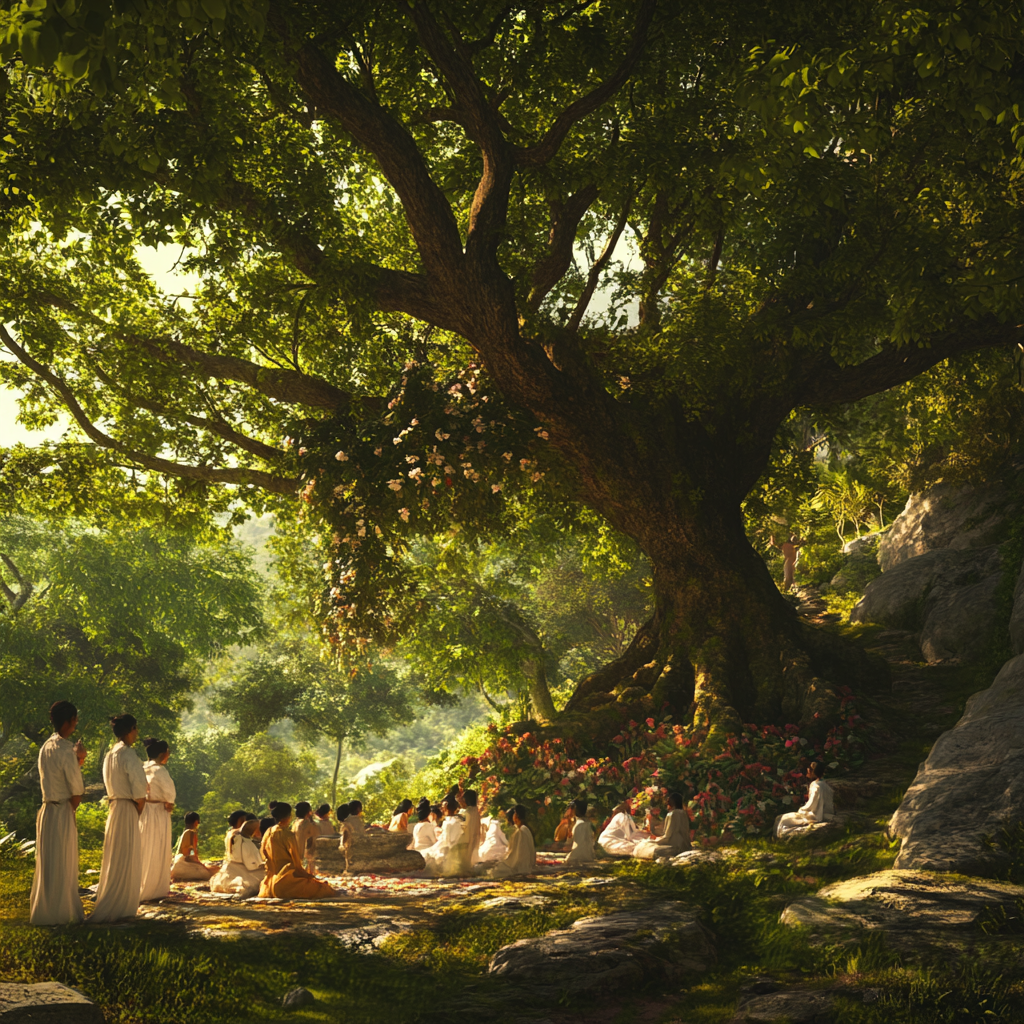
In a time before concrete cemeteries and towering tombs, the people of Cavite in the Philippines practiced an ancient form of burial that was as mystical as it was eco-friendly. Far from the sprawling graveyards we know today, the Caviteños of old placed their deceased within tree trunks, merging life and death in a way that honored both the person and the environment around them. This rare burial custom, known as “tree burial,” was not only a fascinating method of interment but also deeply symbolic, rooted in spiritual beliefs that saw the tree as a vessel connecting life and the afterlife.
The Origins of Tree Burials in Cavite
Tree burial is an ancient practice that has existed in various forms across different cultures worldwide. In the Philippines, specifically among the indigenous Caviteños, tree burial was a practice likely tied to a blend of animism and reverence for the natural world. The Caviteños saw trees as more than just foliage; they were sacred entities with connections to ancestral spirits, offering a bridge between the earthly realm and the spirit world.
When someone passed away, the deceased’s body would be placed within a hollowed-out section of a tree or sometimes wrapped and bound to the tree’s trunk. The chosen tree wasn’t random, either—certain types of trees were believed to be more spiritually potent, possessing an energy that could guide the departed soul to the afterlife. This practice symbolized a deep connection to the earth, as if returning the body to nature could aid the spirit on its journey beyond.
A Sustainable and Symbolic Choice
For the Caviteños, tree burial represented a return to nature, allowing the body to decompose and nourish the forest. In the tropical landscape of the Philippines, trees grow swiftly and thrive, often absorbing the remains into their roots and branches. Unlike conventional burials that involve concrete vaults or coffins, this method was sustainable, leaving little environmental impact.
The tree burial ritual went beyond practicality, however. It was considered a way to honor the dead, allowing their spirit to “grow” within the tree. Families would return to these trees not as gravesites, but as living markers of their loved ones. They could visit and feel a part of the natural surroundings, symbolizing the idea that life continues through nature. These burial trees weren’t simply “markers” but were regarded almost as reincarnations, holding within them the essence of those who had passed.
The Sacred Role of the “Babaylan”
Central to the tree burial process was the role of the “babaylan” or spiritual leader. These babaylan were typically women who served as healers, mediums, and guides in matters of life and death. They performed ceremonies before a tree burial, communing with spirits and ensuring that the deceased’s journey to the next world would be safe. It was their role to select an appropriate tree for burial, believed to be a conduit between the world of the living and the world of spirits.
Through prayer, offerings, and sacred rituals, the babaylan consecrated the burial tree, blessing it so that it might serve its purpose as a sacred vessel. This part of the ritual was essential, as the Caviteños believed that a tree without the proper blessings could trap a spirit between worlds, causing unrest to both the soul and the tree.
The Decline and Rediscovery of Tree Burials
The spread of Christianity during the Spanish colonization in the Philippines brought about a significant decline in indigenous burial practices. Tree burials were discouraged and, in many areas, replaced by Christian burials in churchyards or cemeteries. With time, the practice nearly faded into obscurity, preserved only in the stories of elders or fragments of oral history.
Today, however, there is a renewed interest in indigenous cultures and their unique, sustainable practices. The tradition of tree burial has found a small revival among Filipinos who seek to reconnect with their roots and honor the natural world. While not widely practiced, this custom has become a symbol of Filipino heritage and respect for the earth, celebrated by historians, anthropologists, and those wishing to preserve the rich and diverse cultural practices of the Philippines.
Conclusion: A Tradition That Lives On in Spirit
Though tree burial is rare today, the spirit of the ritual lives on. It reminds us of a time when humanity’s connection to nature was deeply intertwined with beliefs about life and death. For the Caviteños, the forest was a sanctuary not just for the living but for the spirits of the dead as well. These sacred trees stood as living testaments to the souls they housed, a silent yet powerful reminder of life’s cycle.
As modern society grapples with environmental challenges, the Caviteños’ ancient tree burial practices offer a glimpse of a sustainable and harmonious approach to honoring the dead. It’s a tradition that may be largely forgotten, but its lessons remain vibrant, rooted in a respect for nature that we could all stand to learn from today.








It’s the best time to make some plans for the long run and it is time to be happy. I’ve read this put up and if I may just I desire to counsel you few fascinating things or advice. Perhaps you could write next articles regarding this article. I want to read even more things about it!
We are a group of volunteers and starting a brand new scheme in our community. Your site provided us with useful information to work on. You’ve performed a formidable job and our entire group can be thankful to you.
Thanks for sharing. I read many of your blog posts, cool, your blog is very good.